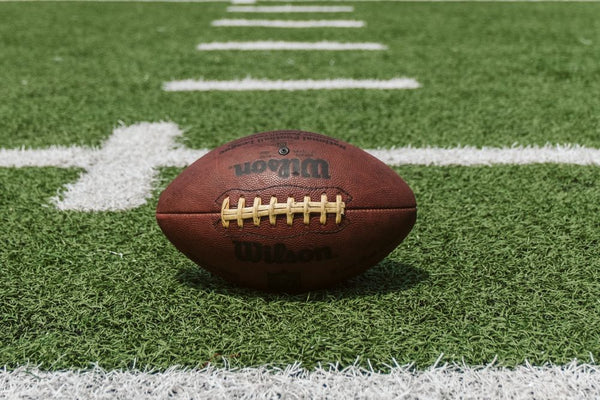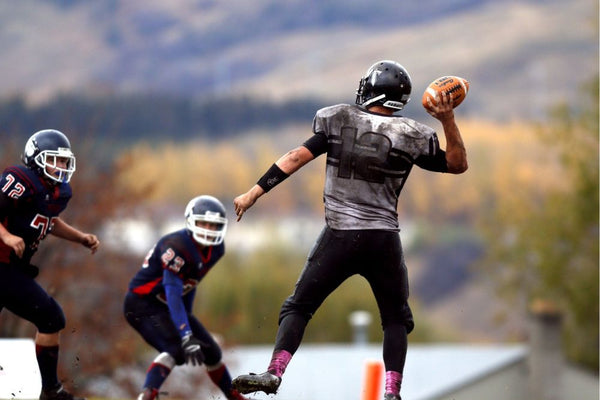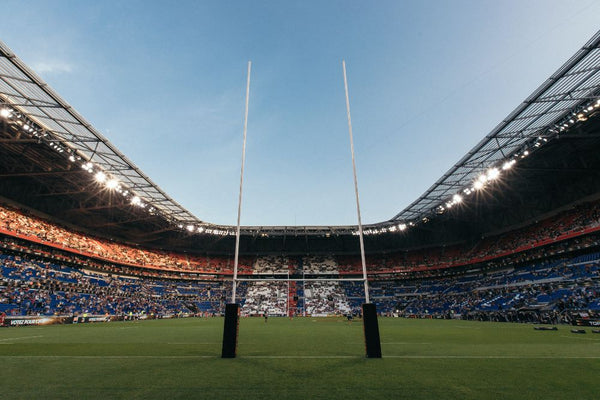American Football vs. Rugby Ball
Welcome to our exploration of the intriguing world of sports balls, where we'll delve into the differences and similarities between American footballs and rugby balls.
This article is brought to you by the UK Rugby Store, your go-to destination for all rugby needs. We offer a wide range of high-quality rugby apparel at UK Rugby Store, perfect for players and enthusiasts.
Stay tuned as we unravel the mysteries behind these iconic sports accessories.
What this article covers:
- What's the Difference Between American Footballs and Rugby Balls?
- How Are Rugby Balls Used?
- How Are American Footballs Used?
- Differences Between Rugby and American Football
- American Football vs. Rugby Ball FAQs
What's the Difference Between American Footballs and Rugby Balls?
Let's kick off by exploring the distinctions between American footballs and rugby balls, two iconic symbols of their respective sports.
A common question is, 'What is the rugby ball called?' Typically referred to simply as a 'rugby ball,' its unique design and characteristics set it apart from its American football counterpart.
Why Do Rugby Balls And American Footballs Have A Similar Shape?
Rugby balls and American footballs share a unique, elongated shape, often described as an elongated spheroid.
Initially, both sports used balls made from pig bladders, which naturally took on this shape when inflated. Over time, the design has been refined to suit each sport's specific needs, but the fundamental shape remains a nod to their shared heritage.
If you're curious about what are rugby balls made of today, they typically consist of synthetic materials for enhanced performance and durability.

What's The Difference Between Rugby And Football Ball Dimensions?
While both balls share a similar shape, their dimensions differ. Like the ones we offer at UK Rugby Store, a standard rugby ball is larger and rounder than an American football.
The larger size of a rugby ball facilitates easier handling and passing, which are crucial elements of the sport. In contrast, the more streamlined and smaller American football is designed for longer, more accurate throws.
Our findings show that the law requires that American football and rugby balls be the same weight. This is approximately 15 ounces.
When it comes to grip, American football has stitches, this is so that the quarterback can hold onto the ball easily.
How Are Rugby Balls Used?
Rugby balls, such as our Scotland RU Rugby Ball, are designed for a game that demands versatility. In rugby, players must run, pass, catch, and kick the ball.
The ball's size and shape make it suitable for various actions, from short passes to high kicks. The surface texture is also tailored to ensure a good grip, which is vital for rugby's dynamic and fast-paced nature.
Can You Use A Rugby Ball To Play American Football?
Using a rugby ball in American football is technically possible, but it wouldn't be ideal. The differences in shape and size mean that a rugby ball doesn't lend itself well to the spiral throws and precise handling required in American football. Plus, the different weights and balances could affect the game's dynamics.

How Are American Footballs Used?
American footballs are smaller and more pointed than rugby balls, which allows for more aerodynamic throws and easier catching during high-speed plays.
The design of an American football is optimised for passing, which is a key component of the sport. The ball's smaller size and shape make it more suitable for the overhand throwing technique used in American football.
Can You Use An American Football To Play Rugby?
Using an American football for a rugby match would be challenging. The sport of rugby requires a ball that is easier to pass and catch with one hand, and the smaller, more streamlined American football might make such manoeuvres more difficult.
Additionally, an American football's different weight and balance could affect kicking and handling, essential components of rugby.
While American footballs and rugby balls might appear similar at first glance, their differences are significant and tailored to the specific needs of each sport.
Differences Between Rugby and American Football
The battle between American football and rugby goes beyond just the balls used; it extends to every aspect of these two fascinating sports. While the balls are a significant part of this discussion, as we at UK Rugby Store know, other distinct differences are worth exploring.

For starters, the game rules in each sport are markedly different. Continuous play and passing the ball backward or laterally are fundamental elements in rugby, whereas strategic stops and forward passes characterise American football.
Scoring systems also vary, with rugby focusing on tries and conversions and American football on touchdowns and field goals.
Another notable difference is the protective gear used. Rugby players generally wear minimal protective equipment, relying on their technique and awareness to avoid injuries. In contrast, American football players are heavily armoured with helmets, shoulder pads, and other protective gear, reflecting the sport's higher impact nature.
American Football vs. Rugby Ball FAQs
What's the difference between rugby and football playing fields?
The playing fields for rugby and American football differ significantly in dimensions and markings. A standard rugby field is larger, measuring up to 100 metres in length and 70 metres in width.
In contrast, an American football field is 120 yards (about 110 metres) long, including the end zones, and 53.3 yards (about 49 metres) wide. The field markings also differ, with rugby fields having fewer lines than the detailed yard lines and hash marks on American football fields.

What's the difference between rugby and football boots?
Rugby and American football boots are designed for each sport's specific needs. Rugby boots are built for versatility, offering a balance between grip, comfort, and agility.
They typically have a higher cut to provide ankle support due to the sport's dynamic movements and scrums. On the other hand, American football boots often have deeper cleats for better traction on the field and may vary in style depending on the player's position.
How is a rugby ball made?
Modern rugby balls are typically made from synthetic materials like polyurethane or rubber, which offer superior grip and weather resistance compared to traditional leather. The chosen material is then cut into four panels.
These panels are printed with the design and branding elements before they are stitched together. The stitching is usually done inside out, ensuring the seams are strong and less prone to tearing during play.
A bladder, usually made of latex or butyl, is inserted into the ball for inflation. The bladder gives the ball its shape and allows it to be inflated to the correct pressure.
Finally, the ball is turned right side out, and the stitching is completed. The manufacturer then inflates the ball to test its shape and pressure. They perform rigorous quality checks to ensure that each ball meets the high standards required for play, whether for a casual game or a professional match.

How is an American football made?
American footballs are traditionally made from cowhide leather, chosen for their durability and ability to provide a good grip, especially in harsh weather conditions. The leather is first tanned and treated to give the classic brown colour and the necessary texture.
The tanned leather is then cut into four panels, which are sometimes embossed with the logo of the league or the manufacturer. The panels are then sewn together, leaving a small opening for the bladder.
The stitching is a crucial part of the process, as it needs to be strong enough to withstand the high-impact nature of the sport.
A rubber or latex bladder is inserted into the ball for inflation. The bladder gives the ball its shape and ensures it can be inflated to the correct pressure, which is crucial for the ball's performance in the game.
Once the bladder is in place, the ball is laced up. The laces are a distinctive feature of American football and provide a vital grip point for players when throwing the ball.
After assembly, each football is inspected and tested for quality. This includes checking the ball's weight, size, and shape and ensuring it is adequately inflated and correctly holds air. Only after passing these tests is the ball deemed ready for the field.
Conclusion
As we wrap up our discussion on American Football vs. Rugby Ball, it's clear that these two sports, while similar in some aspects, are distinctly unique in their requirements and play styles.
We at UK Rugby Store are passionate about bringing you the best in rugby products, from rugby shirts to rugby accessories. Whether you're a seasoned player or a new fan, we encourage you to explore our collection of high-quality, official merchandise from the world's leading clubs and international rugby teams.
Check out our exclusive products, like the Wales RU Rugby Ball, England RFU Rugby Ball, and Ireland RFU Rugby Ball, and experience the quality that sets us apart.
Embrace your love for rugby and shop now at UK Rugby Store – where we bring the game to life!
If you want to learn more, why not check out these articles below:
